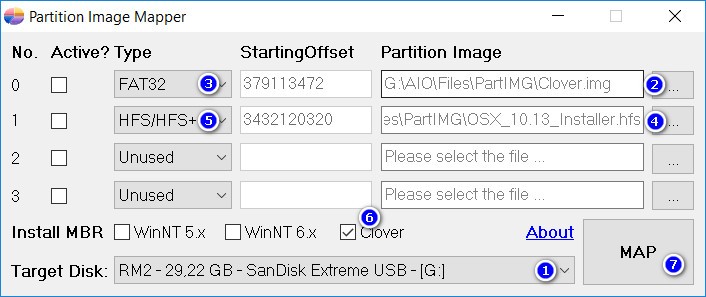
- #MAC USB INSTALL DISK CREATOR INSTALL#
- #MAC USB INSTALL DISK CREATOR UPDATE#
- #MAC USB INSTALL DISK CREATOR FULL#
- #MAC USB INSTALL DISK CREATOR MAC#
To format the partition, type format fs=ntfs quick, and then click ENTER. To select the partition that you just created, type select partition 1, and then click ENTER. To create a new primary partition on the USB flash drive, type create partition primary, and then click ENTER. This command deletes all data from the USB flash drive. Note the drive number or drive letter of the USB flash drive.Īt the command prompt, type select disk, where X is the drive number or drive letter of the USB flash drive, and then click ENTER. The list disk command displays all the disks on the computer. In the new command line window that opens, to determine the USB flash drive number or drive letter, at the command prompt, type list disk, and then click ENTER. Open a Command Prompt window as an administrator. Insert a USB flash drive into a running computer. Restore or repair your server running Windows Server Essentials
#MAC USB INSTALL DISK CREATOR FULL#
Restore a full system from an existing client computer backup
#MAC USB INSTALL DISK CREATOR INSTALL#
You can format the drive and then go back to the Recovery menu and install macOS Monterey.To create a bootable USB flash drive for use in recovering or reinstalling Windows on a PC instead of a server, see Create a recovery drive.įor additional scenarios in which you may want to create or use a bootable USB flash drive, see the following topics: If you want to erase your disk first, to do a clean install, quit the installer and run Disk Utility from the Recovery menu. After selecting it, your system will boot off your USB drive and enter macOS Recovery with the macOS Monterey installer appearing on your screen. You should now see an option to select your USB drive as a startup disk.
#MAC USB INSTALL DISK CREATOR MAC#
To boot an M1 or M2 Apple silicon Mac using a bootable USB disk, power on the system or restart it if it’s already on, and keep the Power button pressed down. Power on the system, or restart it if it’s already on, and immediately press and hold the Option key when it starts booting. Simply plug your created USB drive into an open USB port on your Mac. There are two different methods to boot your Mac from a bootable USB, depending on which processor your Mac has. You can use Time Machine to easily back up the data on your Mac. This almost always results in a Mac running faster after a clean install, since macOS has started over with a clean slate.īefore you reinstall macOS on your Mac, make sure you’ve backed up all your important data! This is crucial when you do a fresh installation, as it will wipe your hard drive. A clean installation allows you to get rid of junk apps and files that may have accumulated over time. These issues include when your Mac refuses to boot or when you need to recover system files that seem to be lost.Īnother benefit of using a bootable disk for a macOS installation is that you can perform a clean installation.

DropDMG will ask you to select an installer (downloaded from the Mac App Store or Apples developer site).

You can also use the built-in recovery tools that come with the macOS installer to troubleshoot and fix different kinds of issues. Choose Create macOS Install Disk from the File menu. This can save quite a bit of time, considering the most recent versions of macOS have an installer size of 12GB.
#MAC USB INSTALL DISK CREATOR UPDATE#
Why Would You Need to Install macOS From a USB?Ĭreating a bootable USB drive and using it to reinstall macOS is a bit of a lengthier process compared to simply updating macOS from the Software Update section of the System Preferences, but it has its benefits.īut creating a bootable USB disk allows you to install or update macOS on multiple systems without having to download the installer on each Mac.


 0 kommentar(er)
0 kommentar(er)
